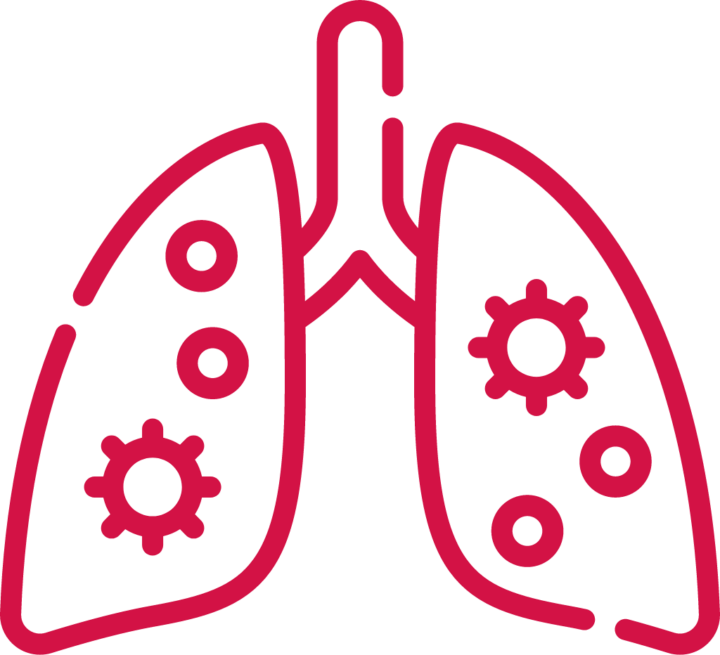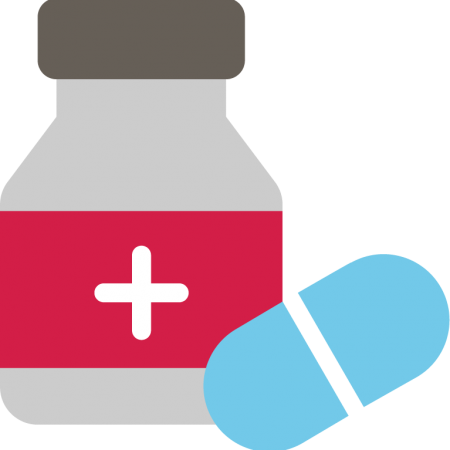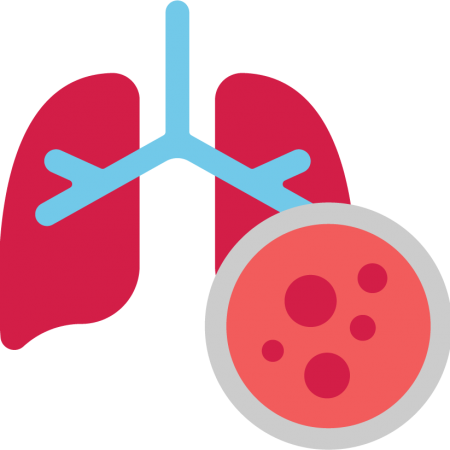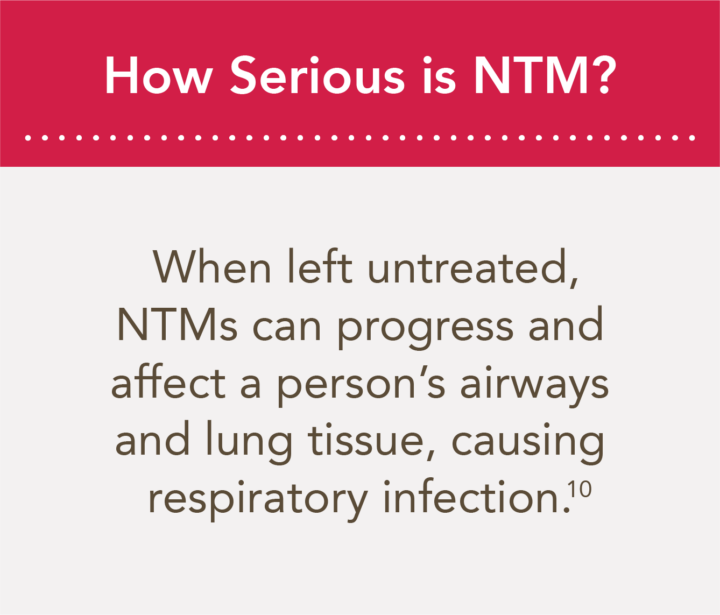
Nontuberculous Mycobacteria (or NTM) are organisms that naturally occur in water, soil, and dust.¹ When you inhale these NTM organisms, the bacteria travel to your lungs, which may cause a respiratory infection to develop. Though NTM lung disease can affect anyone, you may be at higher risk if you have a pre-existing lung condition, such as bronchiectasis and COPD (chronic obstructive pulmonary disease).²
Although many people naturally clear NTMs from their lungs and avoid potential pulmonary damage, NTM lung infections still affect more than 86,000 people in the United States—the majority of whom are women and people over 65.³
This guide will discuss the causes, symptoms, and treatment options for NTM lung disease and explore prevention tips to protect your airways.
Causes of NTM Lung Disease
NTM infections develop after exposure to bacteria in the environment. This can occur through inhalation of contaminated dust or contact with contaminated soil or water.
As mentioned, individuals with underlying lung conditions are at a higher risk of developing NTM infections. However, other risk factors may include:
- History of smoking
- Tuberculosis
- Recurring pneumonia
- Certain autoimmune diseases4
How Does It Differ from Other Mycobacterial Infections?
 NTM is caused by a different species of mycobacteria. For example, while the Mycobacterium tuberculosis bacteria cause tuberculosis (TB), NTM infections are caused by various mycobacterial species, such as Mycobacterium avium complex (MAC) or Mycobacterium abscessus.5
NTM is caused by a different species of mycobacteria. For example, while the Mycobacterium tuberculosis bacteria cause tuberculosis (TB), NTM infections are caused by various mycobacterial species, such as Mycobacterium avium complex (MAC) or Mycobacterium abscessus.5
Additionally, NTM is not contagious like TB6 and is instead found in water and soil sources. In fact, NTM typically thrives in water and is found in many municipal water supplies and household plumbing.7
NTM Lung Disease Symptoms
Symptoms of NTM can vary depending on the type of bacteria and whether or not you have a chronic lung condition. However, common symptoms may include:
- Coughing
- Shortness of breath
- Fatigue
- Fever
- Night sweats
- Weight loss
Some people may also experience chest pain, wheezing, or coughing blood.8 Consult with your healthcare provider if you experience any of these symptoms, especially if you have a history of lung disease or other risk factors for NTM infections.
NTM and Your Lungs
Different species of bacteria can enter the lungs by inhaling contaminated air or through the bloodstream from other body parts.
Once inside the lungs, bacteria can attach to the lining of the airways and cause inflammation, leading to coughing, fever, and difficulty breathing. In some cases, bacteria can invade the lung tissue, causing more severe infections.9
With NTM, your lungs and airway become inflamed due to bacterial growth. If left untreated, NTM can develop into an infection causing damage to the lungs and airways, making breathing harder and exacerbating other symptoms associated with your chronic lung condition.10
Diagnosing NTM
Since each type of NTM will affect a person’s body individually, you may experience different symptoms than other patients. Therefore, your clinician may perform a combination of diagnostic tools, including medical history, physical examination, imaging scans (CT scans or x-rays), and sputum testing.11
How Is NTM Lung Disease Treated?
Depending on the severity and exposure of the bacteria, and any underlying conditions you may have, your healthcare provider may recommend one or a combination of the following treatments:
 Antibiotic Regime
Antibiotic Regime
Your doctor may prescribe a combination of antibiotics to effectively treat a particular strain of the infection.12
Airway Clearance Therapy
 To help prevent mucus buildup, your doctor may recommend airway clearance via a respiratory vest (high frequency chest wall oscillation therapy)13 or manual chest physiotherapy. This type of therapy works to help break the cycle of mucus buildup, helping to loosen mucus, so it’s more easily coughed out and helps to reduce the onset of inflammation and infection in the lungs.14
To help prevent mucus buildup, your doctor may recommend airway clearance via a respiratory vest (high frequency chest wall oscillation therapy)13 or manual chest physiotherapy. This type of therapy works to help break the cycle of mucus buildup, helping to loosen mucus, so it’s more easily coughed out and helps to reduce the onset of inflammation and infection in the lungs.14
Surgery
 If your lung infection is concentrated in one specific area or is causing severe damage to one of your lobes, your doctor may advise surgery. This is typically a last resort and is usually recommended after a patient has already undergone standard antibiotic therapy with little to no success.15
If your lung infection is concentrated in one specific area or is causing severe damage to one of your lobes, your doctor may advise surgery. This is typically a last resort and is usually recommended after a patient has already undergone standard antibiotic therapy with little to no success.15
Prevention of NTM Lung Disease
While it may not be possible to prevent NTM infections completely, you can take steps to reduce your risk. This includes:
Avoiding exposure to contaminated water sources: try to stay away from hot tubs, pools, and adequately maintain your household plumbing systems.
Practicing good hygiene: Remember to wash your hands regularly and cover your mouth and nose when coughing or sneezing.
Work with your healthcare team: If you have a weakened immune system, working closely with your healthcare provider to manage your condition and reduce your risk of infection is essential.
Talk to your doctor about HFCWO therapy: HFCWO helps clear excess mucus and other secretions from the airways, which is essential for reducing the risk of infection from NTM lung disease and chronic lung illnesses. If you have bronchiectasis and are exposed to NTM, talk to your doctor about the SmartVest Airway Clearance System.
SmartVest works to help reduce the cycle of inflammation and infection from mucus buildup by gently squeezing and releasing the upper chest wall, creating rapid air movement throughout the lungs. Our device helps loosen, thin, and propel mucus upward, where it’s more easily coughed up.
Want to Learn More?
If you’d like to find out how SmartVest can help you manage your symptoms and reduce the risk of respiratory infections or flare ups, talk to one of our patient care advocates today.
You can easily schedule a call with our Respiratory Therapists to discuss your concerns, ask questions, and get the support you deserve for your symptoms.
We’ll also send you an informational packet with helpful resources, clinical studies, testimonials, and more to share with your healthcare team.
Resources
[1] Cleveland Clinic. “NTM Lung Disease.” Retrieved from https://my.clevelandclinic.org/health/diseases/22861-ntm-lung-disease
[2] Cleveland Clinic. “NTM Lung Disease.” Retrieved from https://my.clevelandclinic.org/health/diseases/22861-ntm-lung-disease
[3] American Lung Association. “Learn about NTM Lung Disease.” Retrieved from https://www.lung.org/lung-health-diseases/lung-disease-lookup/nontuberculous-mycobacteria/learn-about-nontuberculosis-mycobacteria
[4] Cleveland Clinic. “NTM Lung Disease.” Retrieved from https://my.clevelandclinic.org/health/diseases/22861-ntm-lung-disease
[5] Cystic Fibrosis Foundation. “Nontuberculous Mycobacteria (NTM).” Retrieved from https://www.cff.org/managing-cf/nontuberculous-mycobacteria-ntm
[6] Center for Disease Control and Prevention (CDC). “Tuberculosis Facts: Exposure to TB Fact Sheet.” Retrieved from https://www.cdc.gov/tb/publications/factseries/exposure_eng.htm
[7] American Lung Association. “Learn about NTM Lung Disease.” Retrieved from https://www.lung.org/lung-health-diseases/lung-disease-lookup/nontuberculous-mycobacteria/learn-about-nontuberculosis-mycobacteria
[8] American Lung Association. “Symptoms and Diagnosis of NTM Lung Disease?” Retrieved from https://www.lung.org/lung-health-diseases/lung-disease-lookup/nontuberculous-mycobacteria/ntm-symptoms-causes-risks
[9] Medical News Today. “What Symptoms Do Different Lung Infections Cause?” Retrieved from https://www.medicalnewstoday.com/articles/lung-infection-symptoms
[10] The Chest Foundation. “About Nontuberculous Mycobacteria (NTM) lung infections.” Retrieved from https://foundation.chestnet.org/lung-health-a-z/nontuberculous-mycobacteria-ntm/
[11] Cleveland Clinic. “NTM Lung Disease.” Retrieved from https://my.clevelandclinic.org/health/diseases/22861-ntm-lung-disease
[12] American Lung Association. “Treating and Managing NTM Lung Disease.” Retrieved from https://www.lung.org/lung-health-diseases/lung-disease-lookup/nontuberculous-mycobacteria/diagnosing-and-treating-ntm
[13] COPD Foundation. “Bronchiectasis and NTM 360°: Airway Clearance.” Retrieved from https://www.bronchiectasisandntminitiative.org/Learn-More/Learn-More/Coping-with-Airway-Mucus/Airway-Clearance-Devices
[14] Sievert C et al. Respiratory Therapy, Vol. 11 No 4, 34-38, 2016.
[15] American Lung Association. “Treating and Managing NTM Lung Disease.” Retrieved from https://www.lung.org/lung-health-diseases/lung-disease-lookup/nontuberculous-mycobacteria/diagnosing-and-treating-ntm


